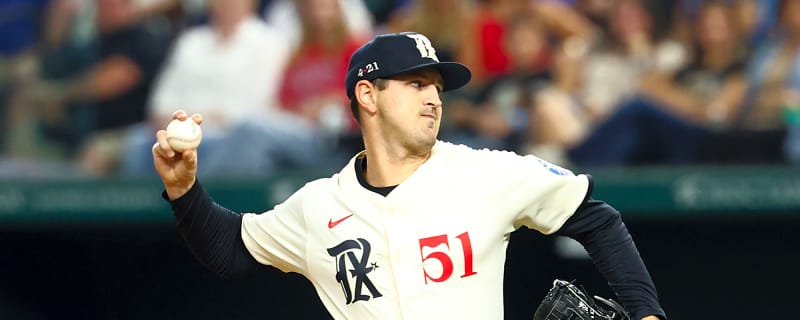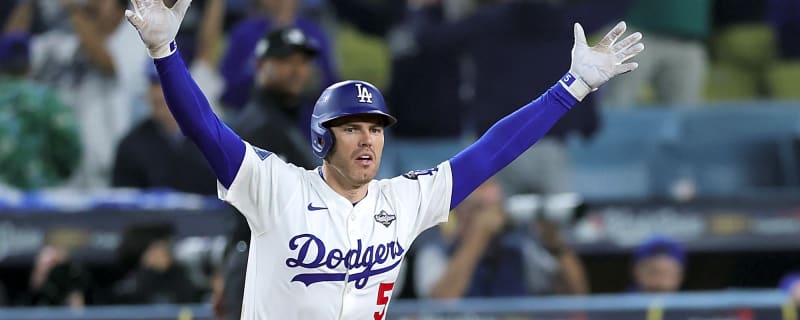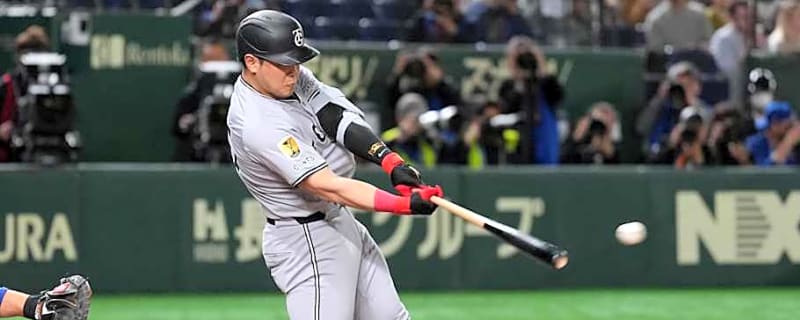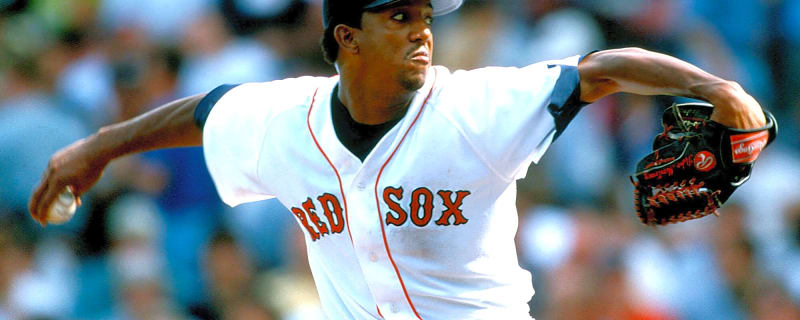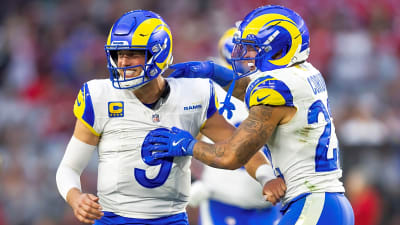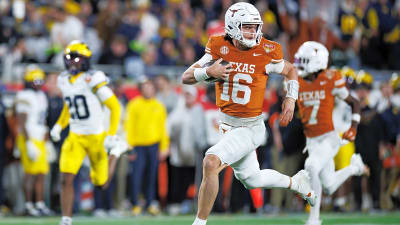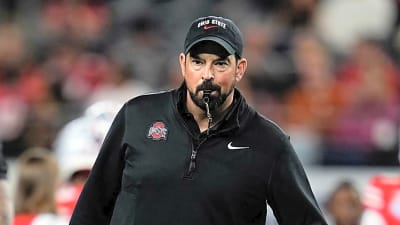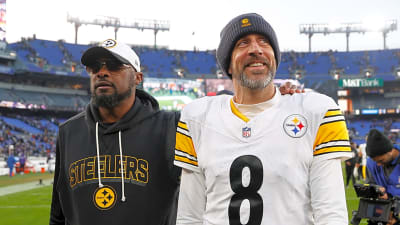- Home
- Quizzes
- My Quiz Activity
- Newsletters
- MY FAVORITES
- Add Sports/Teams
- SPORTS
-
NFL
- NFL Home
- Arizona Cardinals
- Atlanta Falcons
- Baltimore Ravens
- Buffalo Bills
- Carolina Panthers
- Chicago Bears
- Cincinnati Bengals
- Cleveland Browns
- Dallas Cowboys
- Denver Broncos
- Detroit Lions
- Green Bay Packers
- Houston Texans
- Indianapolis Colts
- Jacksonville Jaguars
- Kansas City Chiefs
- Las Vegas Raiders
- Los Angeles Chargers
- Los Angeles Rams
- Miami Dolphins
- Minnesota Vikings
- New England Patriots
- New Orleans Saints
- New York Jets
- New York Giants
- Philadelphia Eagles
- Pittsburgh Steelers
- San Francisco 49ers
- Seattle Seahawks
- Tampa Bay Buccaneers
- Tennessee Titans
- Washington Commanders
-
MLB
- MLB Home
- Athletics
- Arizona Diamondbacks
- Atlanta Braves
- Baltimore Orioles
- Boston Red Sox
- Chicago White Sox
- Chicago Cubs
- Cincinnati Reds
- Cleveland Guardians
- Colorado Rockies
- Detroit Tigers
- Houston Astros
- Kansas City Royals
- Los Angeles Angels
- Los Angeles Dodgers
- Miami Marlins
- Milwaukee Brewers
- Minnesota Twins
- New York Yankees
- New York Mets
- Philadelphia Phillies
- Pittsburgh Pirates
- San Diego Padres
- San Francisco Giants
- Seattle Mariners
- St. Louis Cardinals
- Tampa Bay Rays
- Texas Rangers
- Toronto Blue Jays
- Washington Nationals
-
NBA
- NBA Home
- Atlanta Hawks
- Boston Celtics
- Brooklyn Nets
- Charlotte Hornets
- Chicago Bulls
- Cleveland Cavaliers
- Dallas Mavericks
- Denver Nuggets
- Detroit Pistons
- Golden State Warriors
- Houston Rockets
- Indiana Pacers
- Los Angeles Clippers
- Los Angeles Lakers
- Memphis Grizzlies
- Miami Heat
- Milwaukee Bucks
- Minnesota Timberwolves
- New Orleans Pelicans
- New York Knicks
- Oklahoma City Thunder
- Orlando Magic
- Philadelphia 76ers
- Phoenix Suns
- Portland Trail Blazers
- Sacramento Kings
- San Antonio Spurs
- Toronto Raptors
- Utah Jazz
- Washington Wizards
-
NHL
- NHL Home
- Anaheim Ducks
- Boston Bruins
- Buffalo Sabres
- Calgary Flames
- Carolina Hurricanes
- Chicago Blackhawks
- Colorado Avalanche
- Columbus Blue Jackets
- Dallas Stars
- Detroit Red Wings
- Edmonton Oilers
- Florida Panthers
- Los Angeles Kings
- Minnesota Wild
- Montreal Canadiens
- Nashville Predators
- New Jersey Devils
- New York Islanders
- New York Rangers
- Ottawa Senators
- Philadelphia Flyers
- Pittsburgh Penguins
- San Jose Sharks
- Seattle Kraken
- St. Louis Blues
- Tampa Bay Lightning
- Toronto Maple Leafs
- Utah Mammoth
- Vancouver Canucks
- Vegas Golden Knights
- Washington Capitals
- Winnipeg Jets
- NCAAF
- NCAAM
- Olympics
- Boxing
- Entertainment
- Lifestyle
- Golf
- MMA
- Soccer
- Tennis
- Wrestling
- Sports Betting
- More Sports
- RESOURCES
- My Account
- YB on Facebook
- YB on Twitter
- YB on Flipboard
- Contact Us
- Privacy Policy
- Terms of Service
Athletics might not be done spending, could sign more young players to extensions ahead of Las Vegas move
The Athletics have actively locked in their core players, but they might not be done yet.

The 'MLB sub-2.00 ERAs in the Divisional Era' quiz
How many of the 24 Major League starting pitchers that qualified for the ERA title and had an Earned Run Average of less than 2.00 since 1969 can you name in five minutes?
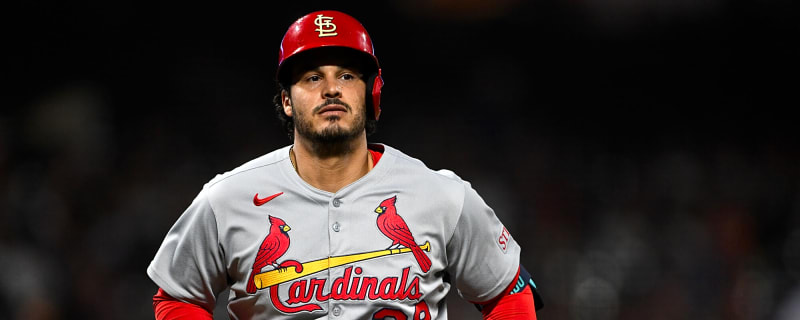
Angels eyeing Nolan Arenado trade in wake of Anthony Rendon restructure
Despite the falloff at the plate, Arenado remains an above-average fielder and a solid contact hitter.
Giants hoping Tyler Mahle will bounce back after injury-riddled season
The San Francisco Giants have agreed to a one-year deal with free-agent right-hander Tyler Mahle.

The 'Active MLB home run leaders' quiz
How many of the most prolific power hitters in baseball today can you name in 5 minutes?
White Sox take a flier on disappointing former top prospect Jarred Kelenic
The White Sox are signing outfielder Jarred Kelenic to a minor league deal.
The 25 most memorable sports plays of 2025
When it comes to unforgettable plays within the 2025 sports calendar, this was truly a special year. Here's our rankings of the 25 best.
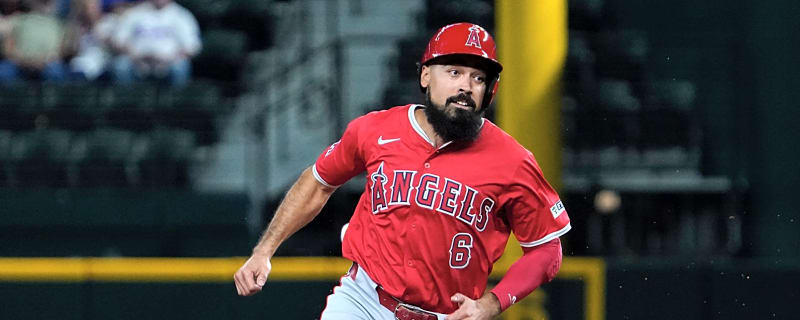
Anthony Rendon restructure will finally end Los Angeles' $245M mistake
It’s easy to forget, but Rendon’s Angels tenure started out quite well.
Mets news & buzz: Mets dream about Tarik Skubal; Cody Bellinger seems to be slipping away, more
Despite making a series of moves to reinforce the lineup and the bullpen, the New York Mets have yet to really address the rotation.
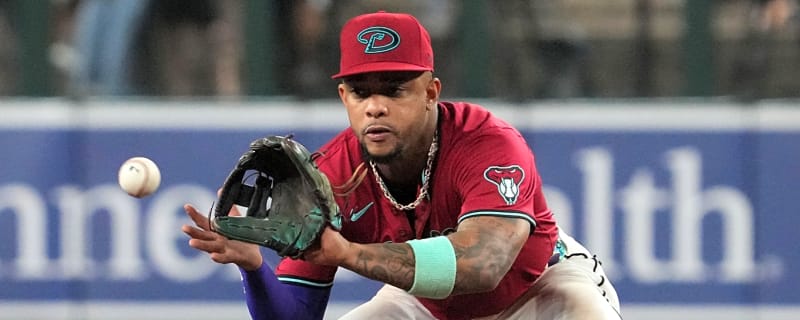
Diamondbacks GM gives update on Ketel Marte trade speculation
Arizona Diamondbacks second baseman Ketel Marte has been one of the most prominent names on Major League Baseball's hot stove this offseason.
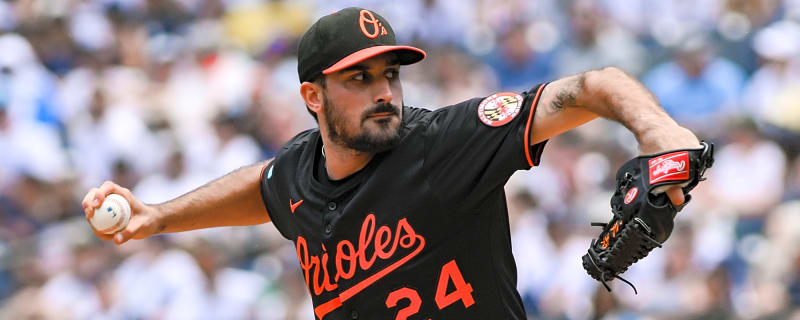
Orioles banking on rotation depth being enough in AL East
While the Orioles' acquisitions improved the depth of the rotation, they did not address their lack of a true top-of-the-rotation starter.
Red Sox could be inching closer to Cardinals' Brendan Donovan
The Red Sox and Cardinals have been the closest partners in the MLB offseason.
New development in Pirates' pursuit of Kazuma Okamoto
The Pittsburgh Pirates have added to their lineup this offseason, but their pursuit of Kazuma Okamoto shows that they aren't done yet.
The 25 greatest pitching seasons from the modern MLB era
America's favorite pastime has more memorable performances than any sport. As such, figuring out which pitchers had the best seasons ever is no easy task.
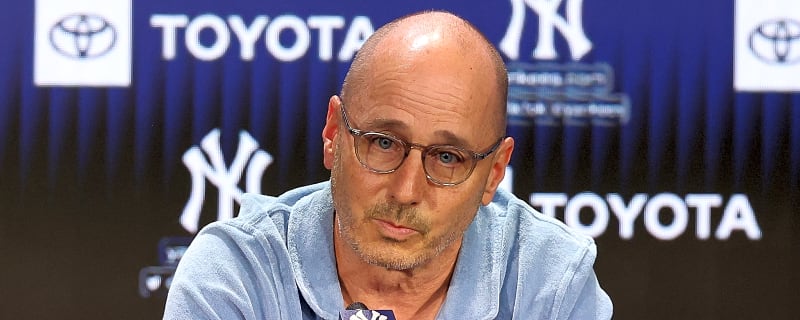
Yankees’ latest rumors point to a club in decline as AL East foes grow stronger
Christmas has come and gone, and by the looks of it, Santa missed the Bronx.

Tatsuya Imai reportedly yet to receive major league offer
Nippon Professional Baseball pitcher Tatsuya Imai is one of the more intriguing arms available in free agency. That, however, has not resulted in anything more than vague interest.
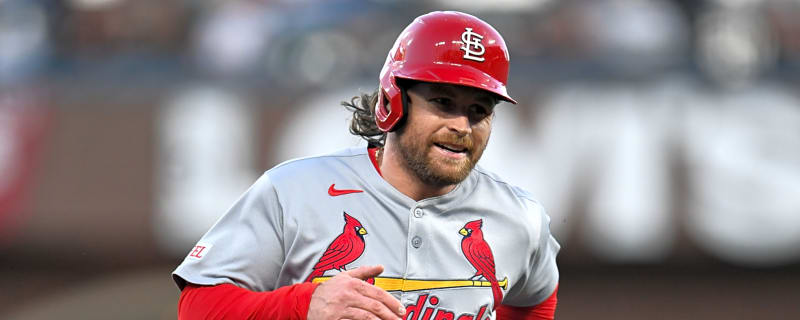
Red Sox could return to Cardinals trade well for third time this offseason
The Boston Red Sox and St. Louis Cardinals have already made a pair of trades this offseason. A third deal could be in the works.
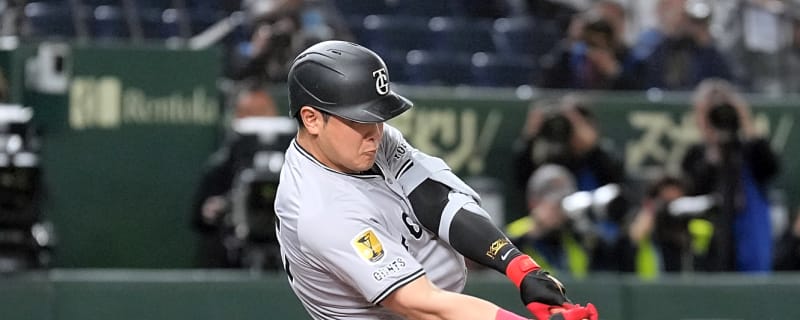
Market for NPB infielder Kazuma Okamoto heating up
The posting window for Japanese infielder Kazuma Okamoto is set to close at 5:00 PM on January 4. His market is starting to heat up as the deadline approaches.

Cardinals, Mariners rumors regarding Brendan Donovan trade take significant turn
There have been rumors out there for weeks that the St. Louis Cardinals are engaging with various teams about the possibility of a trade centered around All-Star utility man Brendan Donovan.

Padres have unexpected option to boost their outfield
Another unexpected option could also see time on the grass in 2026.

Yankees sign 2025 Mexican League MVP
The New York Yankees have signed an outfielder and 2025 Mexican League MVP in a splash offseason move.

How AL teams have addressed their weakest positions of 2025
Let’s see what the American League’s 15 teams have done (so far) to address their least-productive positions from the 2024 campaign.

Yankees finally getting first base stability again
This is the most significant jump in the development of a homegrown first baseman since Don Mattingly.

How NL teams have addressed their weakest positions of 2025
Opening Day is a little under three months away, so there’s still lots of time for clubs to fill roster holes.
Philadelphia Phillies star 1B Bryce Harper takes a swipe at team president Dave Dombrowski
Bryce Harper is using anything that he can to motivate himself this offseason.

Rough Winter League performance causes panic for this Yankees outfielder
His recent statistics have popped up some question marks within the Yankees environment.

25 MLB players on the brink of stardom in 2026
The stars were out in full force during the 2025 World Series. From Max Scherzer in Toronto to Freddie Freeman, Mookie Betts, and of course, Shohei Ohtani, in Los Angeles, there was no shortage of the game's best under the brightest lights.
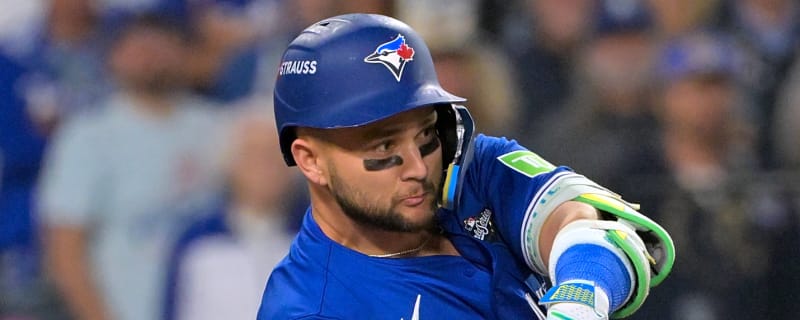
Mets' pursuit of Bo Bichette and Alex Bregman faces one major obstacle
The Mets' offseason has tested the fans' patience and belief in president of baseball operations David Stearns.
Breaking News
Trending News
My Favorites
Customize Your Newsletter
 +
+
Get the latest news and rumors, customized to your favorite sports and teams. Emailed daily. Always free!
PRIVACY POLICY EDITORIAL POLICY CONTACT US
ABOUT YARDBARKER TERMS OF SERVICE
Use of this website (including any and all parts and
components) constitutes your acceptance of these
Terms of Service and Privacy Policy.
This site is for entertainment purposes only.
There is no gambling offered on this site.
Gambling Problem? Call 1-800-Gambler.

 Free Newsletters
Free Newsletters